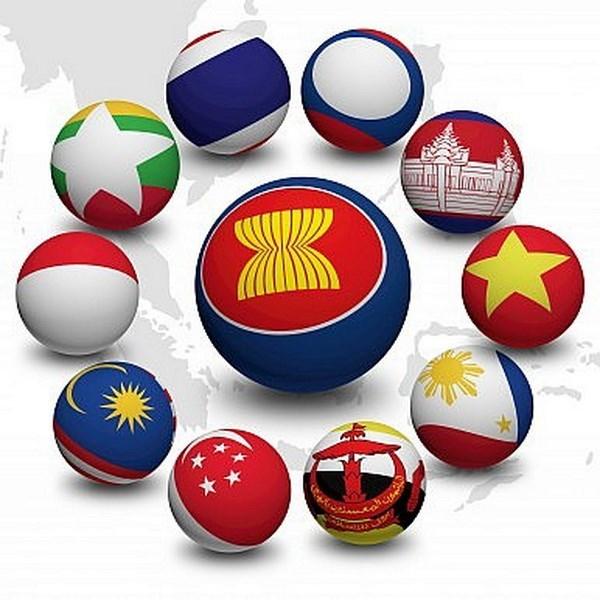JAKARTA, Dec. 24 (Xinhua) -- The Association of Southeast Asian Nations (ASEAN) is now advancing its mechanisms to facilitate the creation of the ASEAN Community (AC) with several measures to address its efficacy target by 2025 already carried out in the first year since it was instituted on Dec. 31, 2015.
The three pillars that embody the ASEAN Community, comprised of the ASEAN Economic Community (AEC), ASEAN Political and Security Community (APSC) and ASEAN Socio-Cultural Community (ASCC), were set in an ASEAN blueprint to configure the bloc's new paradigm in the future.
The creation of the single identity supported by those pillars is assessed as being essential in dealing with the current global economic and political issues, analysts said.
They said strong cohesiveness among the ASEAN member countries would further extend the peace and prosperity that have been enjoyed by around 620 million people living in the region over the past five decades.
The creation of the ASEAN Economic Community (AEC) was originally expected to establish a single regional market and production base, turning the region into an economic-competitive area with fair economic development that is fully integrated into the global economy.
ASEAN Deputy Secretary General for AEC, Lim Hong Hin, said that 2016 saw numerous advancements towards the AEC creation, among these was the establishment of National Trade Repositories (NTRs) of all the ASEAN member states, allowing traders to get easier access and better compliance with prescribed regulations.
Facilitating the gradual liberalization of the services sector in the regional bloc towards a free flow of service was also put into effect with the signing of the Protocol to Implement the Ninth Package of Commitments under the ASEAN Framework Agreement on Services (AFAS) this year, he added.
"A legal framework that allows the elimination of substantial restriction in cross-border movement between naturalized persons has also been applied, further facilitating trade in goods, services and investments," he said in an interview with Xinhua.
Besides that, the bloc also saw the full ratification of the ASEAN Open Skies agreements, allowing unlimited air transport for passengers and cargo in international airports of certain ASEAN member countries.
Adding to those progresses, Lim said that essential implementation of frameworks to support the AEC Blueprint 2025 has also been put into place.
In addition, a number of economic priority mechanisms to support the AEC Blueprint 2025 have also been completed this year, such as the ASEAN Trade Facilitation Framework (ATFF), the ASEAN Food Safety Regulatory Framework (AFSRF), the ASEAN Institutional Framework on Access to Finance for Micro, Small and Medium Enterprises (MSME), and the ASEAN Tariff Finder.
All advancements during the initial year were noted and praised by Latif Adam, an international trade analyst with the Indonesian Institute of Sciences (LIPI).
He said that all nations in the bloc now expect the AEC can be their savior amid protectionism which tends to be intensively applied by strong economies in the world.
"We have to admit that advancements have already been put in place in the AEC mechanism. We expect that the AEC can be an alternative to compensate for impacts from possible trade hindrances applied by advanced economies with their protectionist regimes," Latif said, referring to the United States President-elect Donald Trump's possible intentions.
Latif said that effort needs to be made to encourage further implementation of the AEC so as to make the bloc the only reliable market for its member states.
Despite a myriad of advances, Lim admitted that apparent challenges were still hampering the efforts to further integrate the regional economy.
The ultimate challenge persists in the disparity of capabilities between the developed and less-developed members that could hamper the latter in addressing the integration commitments.
"These disparities will also have implications on cooperation and policy choices in promoting equality and efficiencies, at least in the short term," Lim added.
Appropriate distribution of benefits gained from the AEC is another challenge, he said.
To address these issues, integrated measures need to be formulated and implemented so as to further boost the capacities of the less-developed members in optimizing their participation and eventually assure them the benefits from the AEC agendas, Lim said.
Uncertainties in global economic and political realms have also added to the challenges in coping with the AEC agendas, he added.
"Facing those challenges, ASEAN nations are required to provide adequate resource support, strong ASEAN institutions, unrelenting political commitment and proactive stakeholders' engagement," Lim pointed out.
Besides the continuing efforts in designing and implementing instruments towards the AEC creation, the regional bloc is now involved in negotiations to create trade deal pacts with its trade partners through the Regional Comprehensive Economic Partnership (RCEP), which involves the ten ASEAN member states and six other economies including China.




 A single purchase
A single purchase









